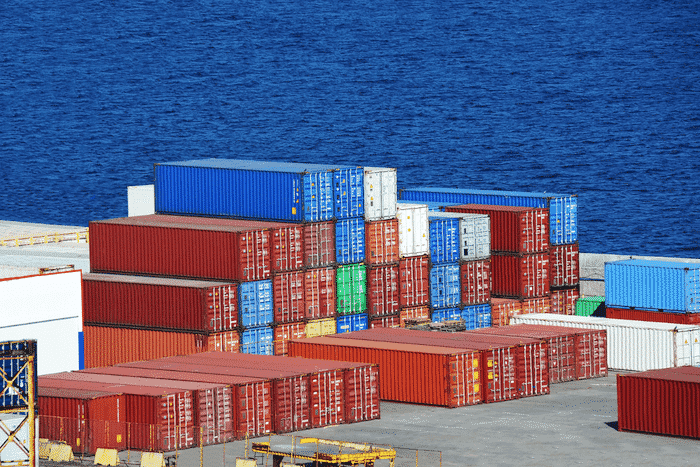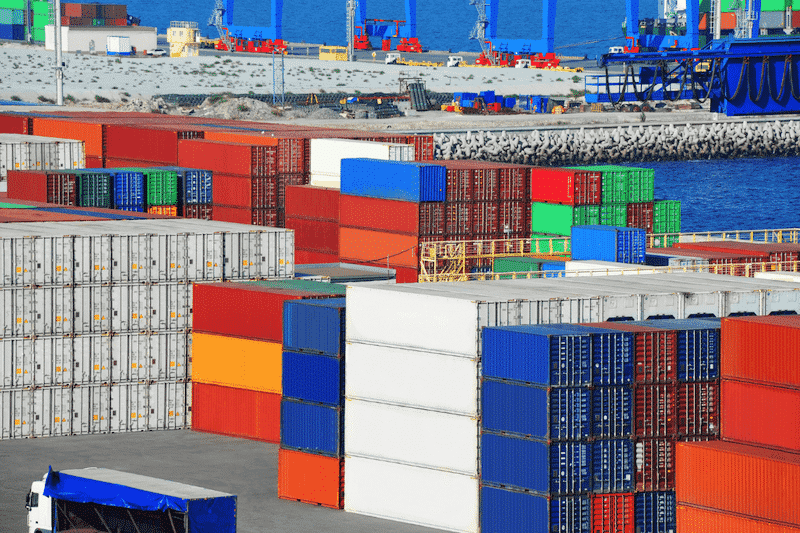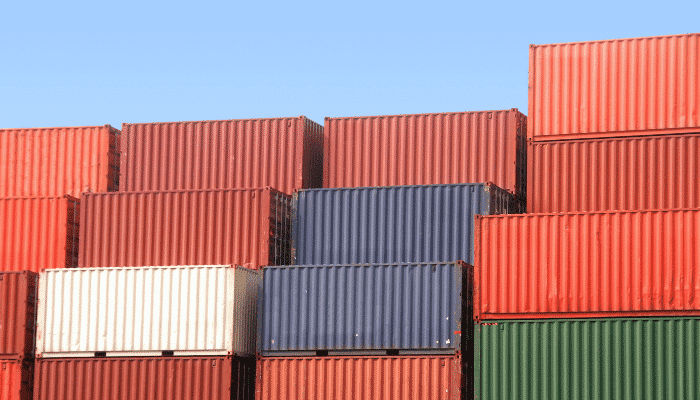What Are Stack Dates in Shipping?
Have your containers been denied entry to the port because they were late?
Well, chances are that you missed the stack dates allotted to you. In other words, the date slot that has been fixed by the port to take your container for loading on board a ship has been missed.
Containers may be carrying cargo or they could be empty. Shipping companies often transport empty containers between locations to meet demand.
Stack dates are dates set by the port in concurrence with the shipping line or its operator based on a ship’s ETA (Expected Time of Arrival at the port). Containers booked on the ship have to reach the port within the opening and closing stack dates.
The vessel operator is responsible for the operations of a ship in a particular port. He coordinates with the ship’s crew, agents, contractors, stevedores, the port authorities, etc.
Stack dates or stack periods are the days when the stack opens and closes for a ship. The stack dates usually vary between 2-5 days depending on the country, terminal, or port.

The operations of various shipping lines whose vessels visit the port are dependent on the stack dates that are allowed for each ship. The port’s smooth functioning is also dependent on these stack dates.
Where do customers get information on the stack dates from? Ports usually issue notices of stack dates on their website or through other channels.
It may also be announced by the shipping line in advance. Based on this information, shippers or their agents plan and deliver their containers to the port.
Why do Ports Issue Stack Dates?
Stack dates are all about planning. The system of issuing stack dates helps the port, the shipping line, the transporter, as well as the shipper.
Stack dates help each of these parties to plan their respective activities and ensure that each accomplishes their part on time. Only when these separate entities complete their part on time can the ship with the containers set sail as planned and meet its schedule.
The shipper has to keep his cargo ready. He has to make arrangements for the loading of cargo onto a container so that the loading is completed and the container moves out on time. The shipping and export documentations have to be completed before this by the shipper or his agent.
The transporter has to ensure that his truck with the empty container reaches the shipper’s premises on time for loading. Once the loading is complete, it has to be transported to the port without any delay.
The ship has to be ready, after bunkering or any maintenance that may be required, to receive the containers according to the stack dates.
The planners at the port yard have to coordinate the temporary storage of the containers received for shipment and their onward movement for loading onboard the ship.
All these activities ensure that the ship sails on time and the dispatch of containers happen smoothly without any glitches. As we can see here, any delay in this chain of cargo movement can have a domino effect and have far-reaching negative consequences.
It may result in the unnecessary idling of the ship without being able to take on containers or a pile-up of cargo. Ultimately the ship’s departure from the port is delayed.

How are Stack Dates for the Various Ships Worked Out?
Stack dates are worked out differently in different ports. However, one general approach adopted by stack date planners the world over is to issue a provisional stack date based on the ETA received from the shipping line or its operator.
Later on, when the ship is closer to the port (about 3-4 days sailing time from the port) the original stack date is revised and a confirmed stack date issued.
A provisional stack date is usually issued a week or even more before the actual ETA of the ship. The ETA of the ship is monitored by the port from time to time and any aberration is noted.
Finally, when the ship is 3-4 days away from the port, a revised, confirmed stack date is issued. This is called a firm stack date.
Ports may often tweak the stack dates to achieve their optimal operations.
Are Stack Dates Needed?
Cargo ships carry thousands of containers between ports, with some of them having a capacity of close to 20000 containers or even more.
Each ship may take thousands of containers from a particular port. Unless this is planned meticulously with the particular port authorities and stack dates fixed, there is bound to be utter confusion.
What will be the scenario without stack dates?
The stowage planner of the shipping line or vessel will not know when the containers are expected in port and therefore, he will not be able to prepare a stowage plan. He will not be able to position the containers onboard.
The shipper will not have a confirmed date to dispatch their containers to the port. Uncertainty can lead to transport problems.
The port yard planner will have no idea when each container is expected and he will not be able to plan the temporary storage or movement of containers to the vessel for stowage.
All this confusion may end up in the vessel idling at berth with no containers to load and stow or being faced with hundreds of containers arriving in a disorganized manner! The result would be the vessel getting delayed or containers not getting loaded. It can lead to delays of other vessels besides upsetting the container schedules at the port.
Stowage Planning and Stack Days
Stowage planners of cargo vessels play a very important role in its operation. The smooth functioning of a cargo ship’s operations rests on the proper planning of stowage onboard the ship.
The stowage planner’s job is to plan the loading of containers from the different ports in such a way that each one is allocated a space whereby containers can be offloaded easily without having to move other containers or relocate them. The weight of the cargo and several other factors are also taken into consideration for stowage planning.
Stowage planning used to be done manually but these days there are software that allows the stowage planner to plan, select, place, move and realign containers to achieve optimum storage while ensuring the safety of the ship.
Shipping lines may have centralized operations to handle the stowage planning for their ships. These centralized operations compile information on the containers from each port of loading and prepare the stowage plan using this real-time data. They manage excess containers between schedules. The final stowage plan is then conveyed to each of their ships.

The Shippers Responsibilities
Shippers or their agents have to ensure that their containers reach the port during the stack days to be included in the stack for a particular vessel. When containers are delayed, they may not be allowed into the port, though most ports allow for unforeseen delays.
In such cases, when the loading is missed, the shipper may have to go through the hassles of having to redo the shipping documentation to reflect the new date of sailing, etc.
In a nutshell, delayed containers upset the loading plan and ultimately result in the delay of the vessel. Other ships waiting in line to take the berth also get delayed in the process.
Not meeting the deadline on stack dates can cause problems for the shipper who may miss his commitment to his customer.
You might also like to read:
- What is Full Truckload in Shipping?
- LCL Shipping – Everything You Wanted to Know
- What Are OEM and ODM In Shipping?
- What is Groupage in Shipping?
- Understanding the CSC Plate Of Shipping Containers
Disclaimer: The authors’ views expressed in this article do not necessarily reflect the views of Marine Insight. Data and charts, if used, in the article have been sourced from available information and have not been authenticated by any statutory authority. The author and Marine Insight do not claim it to be accurate nor accept any responsibility for the same. The views constitute only the opinions and do not constitute any guidelines or recommendations on any course of action to be followed by the reader.
Do you have info to share with us ? Suggest a correction

About Author
Hari Menon is a Freelance writer with close to 20 years of professional experience in Logistics, Warehousing, Supply chain, and Contracts administration. An avid fitness freak, and bibliophile, he loves travelling too.
Latest Maritime law Articles You Would Like:
Latest News
- What are Logistics Risks?
- How Port and Terminal Operators Can Control Emissions?
- Minimum Quantity Commitment (MQC) and Liquidated Damages in Container Shipping: Concept and Relevance
- MARPOL (The International Convention for Prevention of Marine Pollution For Ships): The Ultimate Guide
- The Ultimate Shipping Container Dimensions Guide
- A Comprehensive Overview of IMDG Code for Shipping Dangerous Goods
Subscribe To Our Newsletters
By subscribing, you agree to our Privacy Policy and may receive occasional deal communications; you can unsubscribe anytime.
Web Stories




















